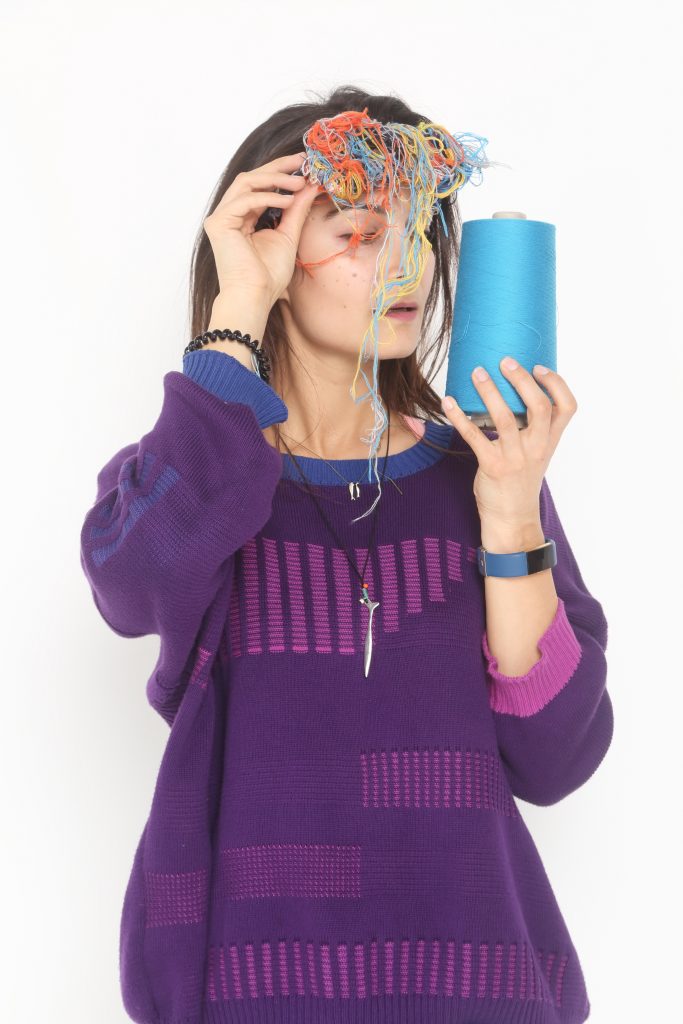The best sustainable and ethical menswear brands to add to your wardrobe

“In my studio, only one big bag of scrap remains from a collection that is more than 20 years old, started from my mother when she was a seamstress. Every piece of fabric scrap is saved in my studio. Then used, utilised, upcycled, repurposed – and, importantly, treasured.
Following years of experience in the fast fashion industry, working in factories from China to Italy, I never failed to be shocked by the huge piles of fabrics that were over-ordered and wasted. The scraps of fabrics discarded on the factory floor filled me with dread.
This wasn’t just one factory, this was every factory around the world. And, to a large extent, still is.
It’s estimated that the fashion industry creates around 13 kilograms of fashion waste for every person on the planet every year. That waste is equivalent to a landmass larger than the size of France.’ (1)
Precision knitwear
I vowed to myself that when the day came to have my own brand I would work in the opposite way. And I do. It takes time, meticulous planning and calculating how to minimise fabric usage, but it’s always worth it.
Knitwear is the most precise way of manufacturing clothing without waste, because you can calculate to the millimetre the amount of yarn needed to knit and shape a garment. Uniquely, it can be shaped whilst in construction. (2)
Knitwear is very precise: you can calculate the exact amount of yarn needed to create a garment
Even swatches and samples can be unwound and re-knitted. Most factories do not do this as it is very time consuming, but I do.
In the machine knitting process, there is still around 20 grams of waste yarn that builds up in each garment. In millions of garments, that quickly accumulates into millions of grams.
I make sure I collect, collate and organise every scrap by colour and fibre so that it can be reused in other ways – such as art projects, embroidery and implemented into accessories.
War on waste
There are many issues that need to be tackled in the global fast fashion industry; yarn and fabric waste is just one of them.
It’s a huge problem, especially as the processes to grow the natural raw materials and gather the fibres – or manufacture the synthetic ones – and then spin, dye, weave or knit them into usable fabrics already has a significant impact on the climate. Not using them is a criminal waste of resources.
Then, at the other end, we’re buying more clothes than ever and sending so many pieces to landfill in the UK and abroad. The tons of clothing that are sent to Africa by charities such as Oxfam are now causing more harm than good, simply moving the problem from one country to the next.
What can consumers do?
There’s so many things consumers can do.
The first would be to avoid buying trend items. The average consumer now buys 400 per cent more clothing than we did 20 years ago. (3)
It’s very tempting when we see fabulous models on the catwalk, then a couple of weeks later a similar piece on the high street at a fraction of the cost, to buy a garment, wear it five times or less, then donate it to become someone else’s problem. But we have to try to buy only when you have thought about it for some time and know we will wear the piece again and again.
Also, where possible, it’s important to buy from independent brands that have sustainability at the heart of their businesses.
Wherever you’re shopping, shop consciously.
Ask what is the fibre made from. If it’s synthetic, it most likely won’t biodegrade.
Ask what atelier or factory it was made in and has the designer personally visited to ensure it’s safe and clean. Ask, does it pay a living wage to its garment workers? Brands should be making every effort to make a difference in their communities.
It’s in these spaces that true fashion design and innovation is taking place. There is plenty of choice with many emerging brands doing the hard work that large fashion houses should be doing.
They’re currently flying under the radar but there are many craft markets and independent pop ups helping them to raise their profile, and platforms like Live Frankly seeking and sharing the truth.”
– Sources:
(1) (3) Common Objective, 2018
(2) Sandy Black, pg 174. 2005
– Valentina Karellas, founder of Valentina Karellas knitwear. This piece is part of our ongoing series speaking to the people at the forefront of sustainability, pioneering a new approach to business.


